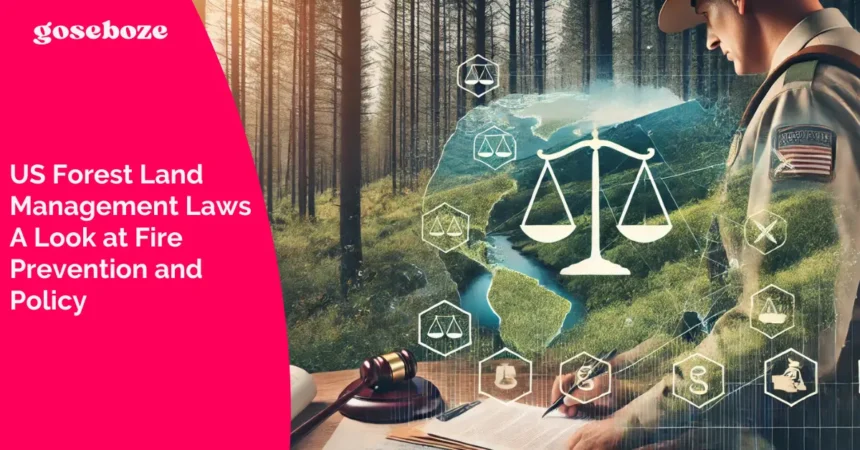Managing the United States’ vast forests is a complex undertaking involving various laws and policies aimed at preventing and mitigating wildfires. With increasing threats from climate change and human activities, forest land management has evolved to incorporate strategies that protect these vital ecosystems and the surrounding communities.
Historical Context
Throughout history, the management of forests in the United States has been shaped by a belief in conservation initially and then by hands-on management practices later on. The devastating wildfires of the 1900s, such as the Great Fire of 1910, were key events that led to stricter regulations in forest management and wildfire litigation. This ultimately resulted in the formation of the US Forest Service and the adoption of policies prioritizing fire prevention, among other considerations.
Evolution of Management Policies
Over the years, our knowledge of forest ecosystems has progressed, resulting in a move from fighting fires to embracing comprehensive management strategies. This change is evident in regulations that advocate for controlled burns and other ecological methods to mitigate fire hazards. The National Forest Management Act of 1976 underscored the importance of sustainability and the well-being of forests, setting the stage for incorporating fire prevention into goals.
Key Legislation
Several important laws form the basis of forest management in the United States today. The National Environmental Policy Act (NEPA) mandates that government agencies evaluate the effects of their activities on areas. The Healthy Forests Restoration Act of 2003 also works towards lowering the risk of wildfires through initiatives such as thinning operations and controlled burns.
Role of the US Forest Service
The United States Forest Service is essential in enforcing these regulations and crafting strategies for preventing fires through research and partnerships with state and local entities. They focus on improving models and devising better response plans to maintain the balance between ecological well-being and human safety.
Read Also: What Makes The Staccato 2011 Such a Great Gun
Fire Prevention Strategies
Fire prevention methods have evolved to be more advanced, blending techniques with technologies like mechanical thinning, clearing excess vegetation, and prescribed burns. Controlled fires designed to mimic natural occurrences are commonly used to reduce fire hazards nowadays. Moreover, the effectiveness of these strategies is further improved through the use of cutting-edge technologies such as satellite surveillance and predictive modeling.
Community Involvement and Education
Effective fire prevention and control greatly depend on the participation of the community. Educational campaigns are designed to raise awareness regarding fire safety and the significance of forest management practices. Local projects, like Firewise USA, motivate individuals living in fire risk zones to minimize fire risks in their surroundings proactively.
Challenges and Critiques
Despite the attempts to address the issue of forest management policies, they encounter obstacles in their implementation journey. Climate change plays a role in increasing fire risks as it disrupts weather patterns and prolongs fire seasons. Furthermore, the limited budget and conflicting land usage priorities can hinder the execution of management strategies. Some skeptics believe that the existing policies fall short of tackling the underlying reasons behind the surge in fire incidents. They advocate for a holistic approach to climate action.
Adapting to Future Needs
In the face of increasing and severe wildfires, it is crucial to update forest management regulations in the United States to address requirements. This involves improving coordination among government bodies at all levels and integrating wisdom and methods from Indigenous communities that have shown success in overseeing areas prone to fires.
Conclusion
Forest management regulations in the US have taken steps to prevent fires by moving from strict firefighting methods to more holistic approaches that also consider the health of the environment. Despite these improvements in policymaking over time to combat wildfires effectively and sustainably, managing the land poses difficulties that call for adjustments and fresh ideas. Given the escalating danger posed by wildfires today, it becomes more crucial to tune these regulations and foster collaboration among different industries, thus safeguarding America’s forests for future generations.

Morgan Reid, with an MBA and a decade in business strategy, specializes in boosting company performance and operational efficiency. Known for practical insights, Morgan contributes to publications and speaks at industry events, blending expertise with a passion for tech and business innovation.







